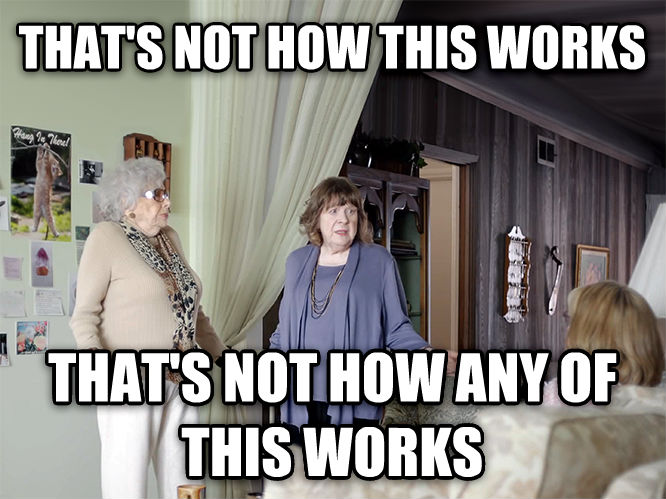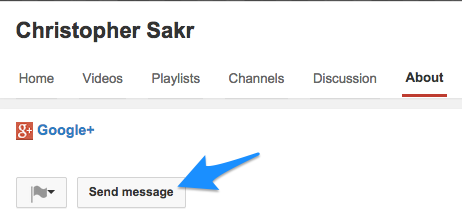The Pixar Braintrust is something I first heard about from Ed Catmull’s book, Creativity, Inc. When I first heard about The Pixar Braintust, Christopher and I struggled to find a balance between our creative vision and criticism from outsiders.
The idea of The Pixar Braintrust had a huge impact on the way ShoHawk conducted our creative projects — it helped us define our strengths and weaknesses, which opened our eyes to bigger possibilities within filmmaking.
How can we get feedback in a safe environment from advisors we like and trust? The answer is to emulate Pixar’s brilliant feedback system – The Braintrust, which is explained here:
THE PIXAR BRAINTRUST, HOW THIS IDEA EFFECTED ME
Hi. My name is Michael Hall and I have a problem.
I struggle with criticism.
I have a tough time opening up and accepting feedback. This is something Christopher and I have worked on recently, but struggled with for years. When we started, we had a grand plan – we would take the world by storm by doing everything ourselves with zero feedback from outsiders.
Guess what?

We worked this way because we were scared. We saw criticism as a reflection of us rather than a reflection of our work. A lot of artists I’ve met have the same mindset, but it’s essential to separate yourself from your art so you can make progress.
We all have bad ideas, I have hundreds everyday. Without constructive criticism it’s easy to get lost and waste time producing mediocre art. We’ve all seen good artists create terrible art because they’re surrounded by yes-men.
ROOTING OUT MEDIOCRITY
The Pixar Braintrust has not only helped foster incredibly successful films at Pixar, but also the recent success at Disney. In Catmull’s recent book, Creativity, Inc., he details the structure of the original group:
“They were funny, focused, smart, and relentlessly candid when arguing with each other. Most crucially, they never allowed themselves to be thwarted by the kinds of structural or personal issues that can render meaningful communication in a group impossible.”
His focus on candor is important because it keeps the creatives honest, which helps the integrity of the film. He continues:
“Think about how easy it would be for a movie about talking toys to feel derivative, sappy, or overtly merchandise driven. Think about how off-putting a movie about rats preparing food could be, or how risky it must’ve seemed to start WALL-E with 39 dialogue-free minutes. We dare to attempt these stories, but we don’t get them right on the first pass. This is as it should be. Creativity has to start somewhere, and we are true believers in the power of bracing, candid feedback and the iterative process—reworking, reworking, and reworking again, until a flawed story finds its through line or a hollow character finds its soul.”
If Pixar can breathe that type of soul into a story about toys, you can do the same with your film?
WHAT MAKES IT WORK?
What makes the Braintrust special? How has it been so successful? The Pixar Braintrust might be exceptional, but it’s not the first. Artists have been implementing these types of groups throughout history, for example:
- The Inklings included writers J.R.R. Tolkien, C.S. Lewis, Charles Williams, and Owen Barfield.
- The Junto was a philosophical Braintrust founded by Benjamin Franklin.
- Disney’s Nine Old Men were the original Disney animators who collaborated on the most famous early disney cartoons.
- The Bloomsbury Group consisted of philosophers and artists including Virginia Woolf, John Maynard Keynes, E. M. Forster and Lytton Strachey.
These groups are not uncommon and can be found all over the world. Braintrusts tap into collective thinking, which helps bring new perspective to your project. Of course, the group needs ground rules and specific goals for each session, otherwise it can turn into a social club.
THE BASICS
Look at creating a group of 3 – 5 people, that way everyone can be heard, and have enough time for feedback. The meeting itself is going to be very structured, only give yourself an hour or so to keep the meeting moving, so you don’t fall into the trap of it becoming a social group.
You want to keep this meeting on a weekly or bi-monthly schedule. Having these meetings occur regularly is important so that none of the members will fall out of practice. During this hour each member is going to give tactics and resources that are currently working for them on their projects.
You might be asking yourself, “If these people are already doing well with their content, why would they want to get involved in something like it?” The biggest takeaway for those joining is the fact that they are getting involved in a group with dedicated and awesome people they can connect with.
FIND YOUR MEMBERS
The folks in your group can’t be just any geek off the street. They need to be people you respect and whom respect you. People learning and growing, just like you.
You want to surround yourself with people a few steps ahead of you. You are in this group to accelerate your learning. They should be a little more successful than you to help you through the trenches.
Where can you find these people? Well, honestly, anywhere. The best place to start looking is online.
These meetings can be held virtually through Google Hangouts, so you’re not dependant on everyone being in the same room at the same time. Start looking at artists work you like and respect, and you think could contribute to the group.
If you find their work on YouTube, contact them through their “about” page, and send them a private message.

On Vimeo you can do this through their homepage:

Instagram and Vine are also great places to find creators you can invite to your group. Instagram has a feature called Instagram Direct where you can send direct photos and videos to the people you follow. If you want to connect with an artist this way you’ll have to write a handwritten note and snap a photo to send.

With Vine, you can send a direct message, again on their homepage:

Meeting digitally is the best way for creative minds to meet, especially for artists living in areas that don’t have access to other artists. However, there are places to find people locally, such as MeetUp.com or Craigslist. Also, Google search for any local filmmaking groups in your area.
CRAFT YOUR MESSAGE
When you start reaching out, don’t overthink it. Your message needs to be a quick note explaining what you are doing and how the group can provide value for them. Try something like:
Hi __________,
My name is Michael Hall, I found your work on Vimeo and think it’s awesome! I’m putting together a group where filmmakers meet through Google Hangouts once a week. We talk about our projects and bounce ideas off each other. I’d love for you to join! If you’re interested, I can give you a few more details, but until then you can check out my work at shohawk.com. It would be great to hear from you either way!
Thanks,
Michael
Try reaching out to five or six people and get a feel for the response you’re getting. If you get everyone to sign on, you’re good to go! If not, don’t worry about it, and keep reaching out. If you want a good explanation for how the group will work, you can always send them to this blog post. 🙂
STRUCTURE
Once you have your group locked and loaded, here are the guidelines and structure the group should strive towards (this is subject to change based on certain circumstances).
Guidelines:
- The group will meet every Saturday at 6pm (Eastern Time)
- It’s expected that you will be present and ready every week, if you can’t make it please email me
- Everyone will have a chance to speak and the group works best if everyone participates equally
- No one is “the leader” of the group, everyone’s say has equal weight
- Criticism will ONLY be constructive
- Each week one member will talk about their specific project and receive feedback from the others in the group with what they’re struggling with
- Each member will practice patience and candor, without open opinions progress can’t happen
This is the structure I’ve put together based on various successful Braintrusts, feel free to add to, or take away from these guidelines. Here are a couple quotes from Ed Catmull’s Creativity, Inc. to give these guidelines context:
“There are two key differences, as I see it. The first is that the Braintrust is made up of people with a deep understanding of storytelling, who usually have been through the process themselves. While the directors welcome critiques from many sources, they particularly prize feedback from fellow storytellers. The second difference is that the Braintrust has no authority. The director does not have to follow any of the specific suggestions. After a Braintrust meeting, it is up to him or her to figure out how to address the feedback. Giving the Braintrust no power to mandate solutions affects the dynamics of the group in ways I believe are essential.”
He expands on the issue of critiquing the filmmaker’s work:
“The film—not the filmmaker—is under the microscope. This principle eludes most people, but it is critical: You are not your idea, and if you identify too closely with your ideas, you will take offense when challenged.”
These are important takeaways because they lay the structure for the group. Once you know what it takes for a successful Braintrust, you can implement the success of others into your foundation.
The Agenda
Once you have your members set and the structure in place, you need to implement a timeline for the meetings. It’s important to have a timeline so the members in the group know the points you need to hit. Here’s an example agenda:
6 PM: Intro / Roundtable – Everyone introduces themselves and the guidelines for the meeting that night are set.
6:05 PM: Everyone shares one amazing thing (related to their work) that happened the previous week.
6:15 PM: The Hot Seat – One member will share what they’re struggling with on their project. They can share a scene or short film. This is the meat of the meeting, where everyone can voice their opinions about what is working with their project. Each week the “hot seat” will change members. Some questions to keep in mind:
- What’s working / what isn’t?
- Where should you spend your time?
- What can you do to improve the scene overall?
6:45 PM: Who can help the person in the hot seat with their problems? What are good resources, tips, tricks, etc?
6:55 PM: Everyone states their goal for the upcoming week.
7:00 PM: Shut it down.
This structure is important because as Catmull mentioned in an earlier quote, the Braintrust has “no authority”. Although you’ll be the one initiating the group and implementing the guidelines no one is in charge – there will be a rotating moderator as there is a rotating hot seat.
Each member will have their chance at each role, and each member needs to hold each other accountable. As with Pixar’s Braintrust, progress can’t be made without candor and patience.
THE TAKEAWAY
It can be hard working alone as an artist and a Braintrust provides accountability and feedback.
Go make it happen!
Only you can take action and make this happen for yourself, go do it. You will be lightyears ahead once you get going. If you want more details on Pixar’s Braintrust, there is a ton of great information in Creativity, Inc.
If you’ve ever been part of a Braintrust, I’d love to hear your thoughts! What are some things I didn’t cover to help others get started?

Your site is so fantastic. I’m going to come back here again.
Awesome, thanks Chadwick!
This site is absolutely fabulous!
Thanks Willie!